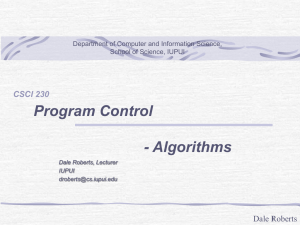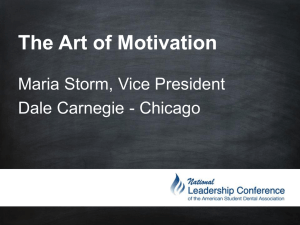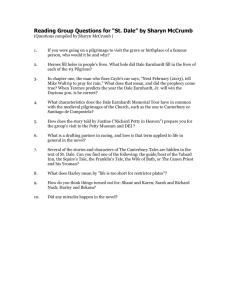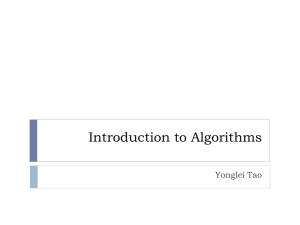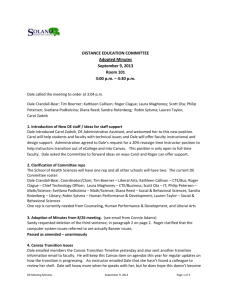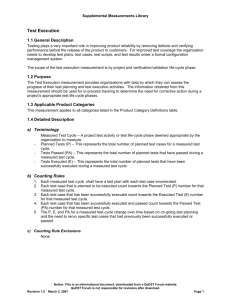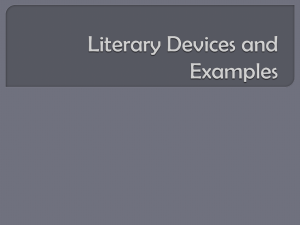Algorithms - Computer & Information Science @ IUPUI
advertisement
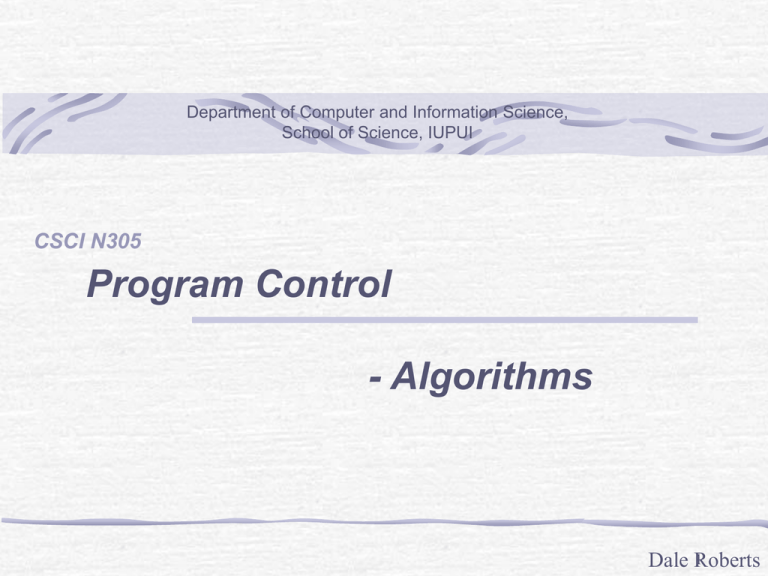
Department of Computer and Information Science, School of Science, IUPUI CSCI N305 Program Control - Algorithms 1 Dale Roberts Algorithms Algorithms is the are part of the problem solving process ‘A’ in STAIR. All computing problems can be solved by executing a series of actions in a specific order, called an algorithm Algorithm: procedure in terms of Actions to be executed The order in which these actions are to be executed Program control Specify order in which statements are to executed Dale 2Roberts Definition of Algorithm Definition of an Algorithm consists of unambiguous & computable operations produce a result halt in a finite amount of time. (Some scientists add a restriction that the algorithm must halt in a reasonable amount of time.) Dale 3Roberts Control Structures Sequential execution Statements executed one after the other in the order written Transfer of control When the next statement executed is not the next one in sequence Overuse of goto statements led to many problems Bohm and Jacopini All programs written in terms of 3 control structures Sequence structures: Built into C. Programs executed sequentially by default Selection structures: C has three types: if, if/else, and switch Repetition structures: C has three types: while, do/while and for Dale 4Roberts Pseudocode Pseudocode Artificial, informal language that helps us develop algorithms Similar to everyday English Not actually executed on computers Helps us “think out” a program before writing it Easy to convert into a corresponding C program Consists only of executable statements Dale 5Roberts Control Structures Flowchart Graphical representation of an algorithm Drawn using certain special-purpose symbols connected by arrows called flowlines Rectangle symbol (action symbol): Indicates any type of action Oval symbol: Indicates the beginning or end of a program or a section of code Single-entry/single-exit control structures Connect exit point of one control structure to entry point of the next (control-structure stacking) Makes programs easy to build Dale 6Roberts Errors in Control Structures Syntax errors Caught by compiler Logic errors: Have their effect at execution time Non-fatal: program runs, but has incorrect output Fatal: program exits prematurely Dale 7Roberts The if Selection Structure Selection structure: Used to choose among alternative courses of action Pseudocode: If student’s grade is greater than or equal to 60 Print “Passed” If condition true Print statement executed and program goes on to next statement If false, print statement is ignored and the program goes onto the next statement Indenting makes programs easier to read C ignores whitespace characters Dale 8Roberts The if Selection Structure Diamond symbol (decision symbol) Indicates decision is to be made Contains an expression that can be true or false Test the condition, follow appropriate path if structure is a single-entry/single-exit structure grade >= 60 true print “Passed” false Dale 9Roberts The if Selection Structure if structure is a single-entry/single-exit structure grade >= 60 true print “Passed” false Dale10Roberts 3.6 The if/else Selection Structure if Only performs an action if the condition is true if/else Specifies an action to be performed both when the condition is true and when it is false Pseudocode: If student’s grade is greater than or equal to 60 Print “Passed” else Print “Failed” Note spacing/indentation conventions Dale11Roberts The if/else Selection Structure Flow chart of the if/else selection structure false grade >= 60 print “Failed” true print “Passed” Nested if/else structures Test for multiple cases by placing if/else selection structures inside if/else selection structures Once condition is met, rest of statements skipped Deep indentation usually not used in practice Dale12Roberts The if/else Selection Structure Pseudocode for a nested if/else structure If student’s grade is greater than or equal to 90 Print “A” else If student’s grade is greater than or equal to 80 Print “B” else If student’s grade is greater than or equal to 70 Print “C” else If student’s grade is greater than or equal to 60 Print “D” else Print “F” Dale13Roberts 3.7 The while Repetition Structure Repetition structure Programmer specifies an action to be repeated while some condition remains true Pseudocode: While there are more items on my shopping list Purchase next item and cross it off my list while loop repeated until condition becomes false Dale14Roberts 3.7 The while Repetition Structure Example: int product = 2; while ( product <= 1000 ) product = 2 * product; product <= 1000 true product = 2 * product false Dale15Roberts Summary: Structured Programming Structured programming Easier than unstructured programs to understand, test, debug and, modify programs Rules for structured programming Rules developed by programming community Only single-entry/single-exit control structures are used Rules: Rule #1.: Begin with the “simplest flowchart” Rule #2.: Any rectangle (action) can be replaced by two rectangles (actions) in sequence Rule #3.: Any rectangle (action) can be replaced by any control structure (sequence, if, if/else, switch, while, do/while or for) Rules 2 and 3 can be applied in any order and multiple times Dale16Roberts Summary: Structured-Programming Rule 1 : Rule 2 : Rule 3 : Begin with the simplest flowchart Any rectangle can be replaced by two rectangles in sequence Replace any rectangle with a control structure Rule 2 Rule 2 ... Rule 2 Rule 3 Rule 3 Rule 3 All programs can be broken down into 3 controls Sequence : handled automatically by compiler Selection : if, if/else or switch Repetition : while, do/while or for Can only be combined in two ways: Nesting (Rule 3) and Stacking (Rule 2) Any selection can be rewritten as an if statement, and any repetition Dale17Roberts can be rewritten as a while statement
